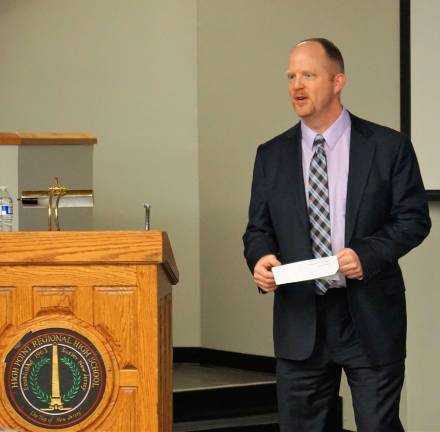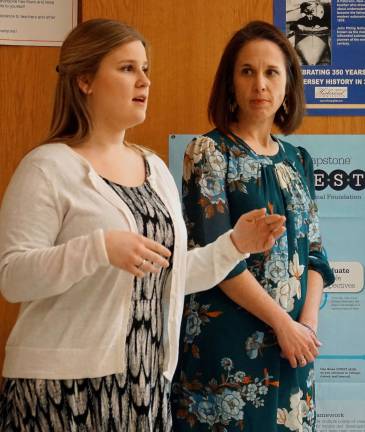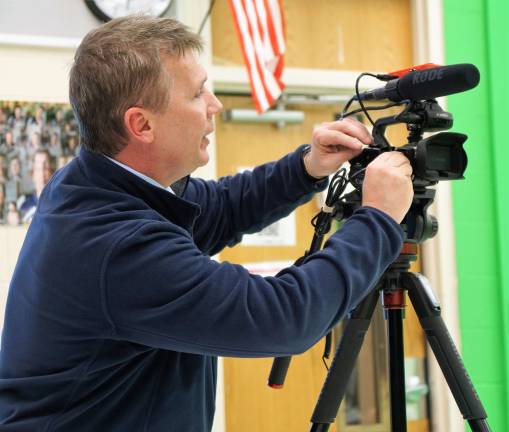High Point school hosts technology, engineering visit




WANTAGE — High Point Regional High School on March 30 hosted the New Jersey Technology and Engineering Educators Association and shared the excitement of new technology and education during a site visit of their campus.
After enjoying dinner provided by the school board, 40-45 administrators and educators were welcomed by Curriculum and Instruction Director Seamus Campbell and Science, Technology, Engineering, and Math (STEM) Supervisor Brian Drelick.
IT Supervisor Mark Wallace spoke of the “Transition and Technology Education Today.” Wallace has been on the cutting edge of Technology Education, from a governor's commission to developing award winning programs. He said students involved in Technical Education are better able to adapt to unknown situations and shared words of wisdom on how to develop and expand Technical Education programs.
Michael DeVilliers, of U.S. Rep. Josh Gottheimer's Office, presented special congressional recognition to current NJTEEA President Wendy Green, incoming NJTEEA President Shane Evans, and the High Point Department of Technological Studies. Previously, the department received the National Program of the Year Award from the International Technology and Engineering Educators Association.
High Point's high caliber of teachers was evident throughout the evening as Kevin Fenlon discussed and demonstrated their Media Technology Program and Livestream; Matt Garrera and Alex Gonzalez reviewed maximizing the use of rapid prototyping; Rebecca Sarno, Gonzalez, and Ann Yaccarino explained how they are bringing science, technology, and math together in an innovative student unit project; and Ben Kappler and Stephen Peltier demonstrated cutting edge curricular growth in Video Game Design and Virtual Reality.
Specifically, Sarno, Gonzalez, and Yaccarino discussed working together with 60 students, broken into 16 groups, to solve the Sussex County commuting problem. They explained 73 percent of the county commutes to surrounding areas on a daily basis.
As a result of a $6,000 state grant for student resources, the students used science, technology, and math in their proposed solutions: minimal environmental impact, research, design, economics, cost, algebra, probability, random number generator and programming on graphic calculators, and building,
Ultimately, each group will produce a promotional video of their solution.
Gonzalez said some groups crunched the numbers to determine it costs $25 million per mile for a railroad, which they were evaluating for viability.
In addition to speaking of the innovation of all the STEM teachers, Drelick said Sarno, Gonzalez, and Yaccarino are bringing together the STEM worlds in a new way. He said, it is not just an “acronym, or some educational buzz term, which is going to float away like so many others do. It's real. It's meaningful. It's challenging.”
He also emphasized High Point's tone of sharing knowledge they have learned along the way. Drelick gratefully remembered the other N.J. technology programs who had shared information, starting 15 years ago, when they were in the midst of transition.
Finally, Drelick said, curricula should come from the teachers, in response to the future needs and desires of students. He also added the greatest thing they have done as a department is the list of graduates, who will fill their shoes in teaching technology – the legacy.